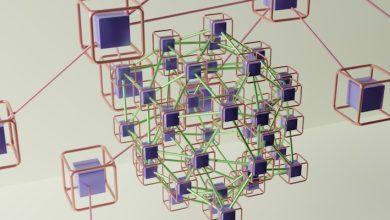Hedera Hashgraph (HBAR): The Enterprise-Grade Public Network

- Hedera Hashgraph: The Next Generation of Distributed Ledger Technology
- Exploring the Unique Features of Hedera Hashgraph
- Why Enterprises are Turning to Hedera Hashgraph for Public Networks
- The Scalability and Security of Hedera Hashgraph Explained
- Real-world Applications of Hedera Hashgraph in Enterprise Settings
- Comparing Hedera Hashgraph to Other Public Networks: What Sets it Apart
Hedera Hashgraph: The Next Generation of Distributed Ledger Technology
Hedera Hashgraph is a cutting-edge distributed ledger technology that is revolutionizing the way data is stored and shared. Unlike traditional blockchains, Hedera Hashgraph utilizes a unique consensus algorithm that allows for fast, secure, and fair transactions. This next generation of DLT offers enterprise-grade solutions for businesses looking to leverage the power of a public network.
With Hedera Hashgraph, companies can benefit from high-performance, low-latency transactions that are scalable to meet the demands of even the largest enterprises. The platform also provides built-in compliance tools and governance mechanisms to ensure that businesses can operate within legal and regulatory frameworks.
One of the key features of Hedera Hashgraph is its ability to support a wide range of decentralized applications, from supply chain management to identity verification. This versatility makes it an attractive option for businesses across industries looking to streamline their operations and improve efficiency.
Exploring the Unique Features of Hedera Hashgraph
One of the key features that sets Hedera Hashgraph apart from other blockchain networks is its unique consensus algorithm known as Hashgraph. This algorithm allows for fast and secure transactions, making it an ideal choice for enterprise-grade applications. In addition, Hedera Hashgraph offers high throughput, low fees, and finality in seconds, providing a reliable and efficient platform for businesses to build upon.
Another standout feature of Hedera Hashgraph is its governance model, which is designed to ensure decentralization and security. The network is governed by a council made up of leading organizations across various industries, ensuring that no single entity has control over the network. This distributed governance model helps to prevent centralization and promotes transparency within the network.
Hedera Hashgraph also offers support for smart contracts and decentralized applications (dApps), allowing developers to build a wide range of applications on the platform. By leveraging smart contracts, developers can create programmable agreements that are automatically enforced on the network, streamlining processes and reducing the need for intermediaries.
Overall, Hedera Hashgraph stands out as a unique and innovative public network that is well-suited for enterprise use. With its fast transaction speeds, low fees, and secure consensus algorithm, Hedera Hashgraph provides a reliable foundation for businesses looking to leverage blockchain technology for their applications and services.
Why Enterprises are Turning to Hedera Hashgraph for Public Networks
Enterprises are increasingly turning to Hedera Hashgraph for their public network needs due to its numerous advantages over other blockchain platforms. One of the key reasons for this shift is Hedera’s high throughput and low latency, which allows for fast and efficient transactions. This is crucial for businesses looking to scale their operations and handle a large volume of transactions without experiencing delays or high fees.
Another factor driving enterprises towards Hedera Hashgraph is its security features. With its asynchronous Byzantine Fault Tolerance (aBFT) consensus mechanism, Hedera ensures that transactions are secure and tamper-proof. This is especially important for industries that deal with sensitive data and require a high level of security to protect their assets and reputation.
Furthermore, Hedera Hashgraph’s governance model sets it apart from other public networks. By incorporating a council of trusted global organizations from various industries, Hedera ensures that decisions are made in a decentralized and fair manner. This gives enterprises confidence in the network’s stability and governance, making it an attractive option for businesses looking for reliability and transparency.
In conclusion, enterprises are turning to Hedera Hashgraph for public networks due to its high throughput, low latency, security features, and innovative governance model. By choosing Hedera, businesses can benefit from a scalable and efficient platform that meets their needs for speed, security, and transparency in an increasingly digital world.
The Scalability and Security of Hedera Hashgraph Explained
Hedera Hashgraph is known for its exceptional scalability and security features, making it a top choice for enterprise-grade public networks. The platform utilizes a unique consensus algorithm that allows for high transaction throughput and fast finality, making it ideal for applications that require quick and secure transactions.
One of the key features of Hedera Hashgraph is its ability to scale to meet the demands of enterprise-level applications. The platform can handle thousands of transactions per second, making it suitable for a wide range of use cases, from supply chain management to decentralized finance.
In addition to its scalability, Hedera Hashgraph also prioritizes security. The platform uses robust cryptographic algorithms to ensure the integrity and confidentiality of transactions, protecting users’ data from unauthorized access or tampering.
Overall, Hedera Hashgraph offers a reliable and secure infrastructure for businesses looking to leverage the benefits of blockchain technology without compromising on performance or security. With its scalable and secure features, it is set to become a leading public network for enterprise applications in the future.
Real-world Applications of Hedera Hashgraph in Enterprise Settings
Hedera Hashgraph (HBAR) has a wide range of real-world applications in enterprise settings due to its high throughput, low latency, and security features. Let’s explore some of the ways in which organizations can leverage Hedera Hashgraph for their business needs:
- Supply Chain Management: Hedera Hashgraph can be used to track and trace products throughout the supply chain, ensuring transparency and efficiency. By utilizing the distributed ledger technology of Hedera Hashgraph, companies can improve the visibility of their supply chain operations.
- Identity Management: Enterprises can leverage Hedera Hashgraph for secure and decentralized identity management solutions. This can help in preventing identity theft and fraud, as well as ensuring the privacy and security of personal data.
- Smart Contracts: Hedera Hashgraph supports smart contracts, which are self-executing contracts with the terms of the agreement between buyer and seller being directly written into lines of code. This can streamline business processes and reduce the need for intermediaries.
- Data Integrity: Hedera Hashgraph’s consensus algorithm ensures the integrity of data stored on the network. This can be particularly useful for enterprises dealing with sensitive information, such as financial institutions or healthcare providers.
- Tokenization: Hedera Hashgraph enables the tokenization of assets, allowing enterprises to digitize and trade a wide range of assets, from real estate to intellectual property. This can unlock new possibilities for asset management and investment.
Comparing Hedera Hashgraph to Other Public Networks: What Sets it Apart
When comparing Hedera Hashgraph to other public networks, it becomes evident that Hedera offers several unique features that set it apart from the competition. One of the main distinctions is its enterprise-grade capabilities, making it an attractive option for businesses looking for a reliable and secure network for their operations.
Unlike some other public networks, Hedera Hashgraph uses a consensus mechanism known as Hashgraph, which offers high throughput and low latency. This means that transactions can be processed quickly and efficiently, making it ideal for applications that require fast and reliable performance.
Additionally, Hedera Hashgraph prioritizes security and stability, with features such as Byzantine fault tolerance and regular security audits. This ensures that the network is resilient to attacks and can provide a trustworthy platform for users to conduct their transactions.
Another key advantage of Hedera Hashgraph is its governance model, which is designed to be fair and decentralized. This means that decisions about the network are made in a transparent and inclusive manner, giving users a voice in how the network evolves over time.



